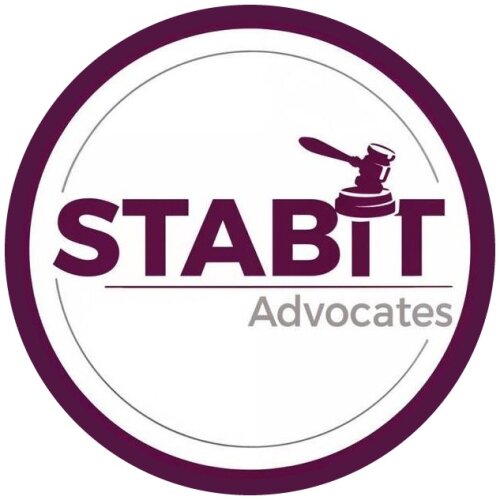Best Renewable & Alternative Energy Lawyers in New York City
Share your needs with us, get contacted by law firms.
Free. Takes 2 min.
List of the best lawyers in New York City, United States
1. About Renewable & Alternative Energy Law in New York City, United States
New York City operates within a layered framework of energy regulation that includes federal, state, and city law. State policy sets broad goals for clean energy and emissions reductions, while the city enacts rules that affect buildings, permits, and local programs. Attorneys and solicitors in New York City navigate these layers to help clients comply and pursue opportunities.
Two of the most influential forces are the Climate Leadership and Community Protection Act (CLCPA) at the state level and Local Law 97 under the Climate Mobilization Act in New York City. The CLCPA directs ambitious statewide targets for clean electricity and emissions reductions, driving demand for renewable projects and efficiency upgrades citywide. Local Law 97 imposes greenhouse gas emission limits on large buildings, shaping retrofit decisions for NYC property owners.
Local Law 97 establishes phased-in greenhouse gas emission limits for buildings larger than 25,000 square feet, with enforcement starting in the mid-2020s and further tightening over time.Source: New York City Department of Buildings
Key agencies involved include the New York State Energy Research and Development Authority (NYSERDA); the New York Public Service Commission (PSC), which regulates utility interconnections and net metering; and the NYC Department of Buildings (DOB), which enforces building and energy codes. These bodies administer incentives, grant programs, and compliance pathways for solar, storage, and energy efficiency projects.
In practice, New York City developers and property owners may pursue rooftop solar, energy storage, community solar, and energy efficiency upgrades while ensuring adherence to building codes and utility rules. The regulatory landscape continues to evolve, with updates to energy codes and emission targets influencing project timelines and costs.
Relevant government resources: NYSERDA (nyserda.ny.gov), NYC Department of Buildings (nyc.gov/site/buildings), and the New York Public Service Commission (psc.ny.gov).
2. Why You May Need a Lawyer
Navigating Renewable & Alternative Energy law in New York City often requires specialized legal counsel to coordinate across agencies, insurers, and contractors. Below are real-world scenarios where an attorney, legal counsel, or solicitor can add value.
- Rooftop solar project on a NYC building - You must obtain permits from the Department of Buildings, comply with fire and electrical codes, and secure utility interconnection with Con Edison. A legal professional can manage filings, coordinate deadlines, and review interconnection agreements to minimize delays.
- Compliance with Local Law 97 for a commercial property - LL97 requires annual emissions reporting and compliance planning to meet phased limits. An attorney can help prepare energy models, negotiate compliance timelines, and address potential penalties with the city’s enforcement office.
- Entering a power purchase agreement or community solar arrangement - Negotiating terms, utility interconnection, and credit arrangements requires careful contract review and regulatory understanding. A lawyer can draft or revise PPA terms to protect your interests and ensure regulatory alignment.
- Applying for NYSERDA incentives or state energy programs - Incentives come with eligibility rules, reporting requirements, and contract terms. An attorney can verify eligibility, structure the deal, and handle documentation to preserve benefits.
- Installing energy storage systems or microgrids - Storage projects involve safety, permitting, fire department approval, and interconnection specifics. A legal professional can coordinate filings, risk assessments, and compliance with NYC energy codes.
3. Local Laws Overview
Local Law 97 of 2019 (Climate Mobilization Act)
Local Law 97 imposes greenhouse gas emission limits on large buildings in New York City, with a phased-in schedule designed to reduce emissions from the building sector. Compliance has begun for eligible properties and enforcement will continue to tighten in the coming years. Property owners should plan energy efficiency upgrades or emissions-control strategies alongside any renewable energy projects.
Key points include eligibility based on building size and use, annual emission reporting, and potential penalties for non-compliance. The law is administered in coordination with the NYC Department of Buildings and the Department of Buildings guidance and calendar are published by the city. Legal counsel can help interpret the limits, prepare necessary energy models, and structure retrofit programs.
For more details, refer to the NYC government guidance on Local Law 97. NYC Department of Buildings - Local Law 97
New York Climate Leadership and Community Protection Act (CLCPA)
The CLCPA sets statewide targets for clean electricity and greenhouse gas reductions, driving demand for renewable energy projects and efficiency programs across all sectors, including New York City. The law supports large-scale deployment of wind, solar, and energy storage, along with building energy performance improvements.
Attorney guidance helps organizations align project planning with CLCPA milestones, assess compliance risk, and navigate state program incentives or procurement processes. For official information, see New York State energy policy pages and the CLCPA overview on state government sites. CLCPA - New York State
New York City Energy Conservation Code (NYCECC)
The NYCECC governs energy efficiency requirements for new construction and substantial renovations in New York City. It is coordinated with the state’s Energy Conservation Construction Code and influences the design and retrofitting of buildings for energy use, including renewable energy integrations and storage systems. Updates to the code affect permit requirements and compliance timelines.
Building owners often work with counsel to interpret code requirements, coordinate with designers, and secure necessary variances or approvals. See the official NYC Buildings pages for the latest NYCECC information. NYC Department of Buildings
4. Frequently Asked Questions
What is Local Law 97 and who does it affect?
Local Law 97 sets emission limits for large buildings in NYC. It affects buildings over 25,000 square feet and certain groups in the private sector. Compliance is assessed annually and failures can trigger penalties.
How do I start a rooftop solar project in NYC?
Begin with an energy assessment, then obtain DOB permits and utility interconnection approval. A lawyer can help coordinate filings and review interconnection agreements with Con Edison.
When does LL 97 require building owners to comply?
Compliance is phased in over several years, with initial emissions limits applying to large properties in the near term. Ongoing updates will tighten limits and enforcement. Check the DOB guidance for annual reporting dates.
Where can I apply for NYSERDA incentives for solar in NYC?
NYSERDA administers solar, storage, and efficiency incentives. Eligibility typically depends on project type, owner status, and project location. An attorney can help confirm eligibility and manage applications.
Why is interconnection with Con Edison important for solar?
Interconnection determines how solar energy is fed into the grid and credited to your account. A lawyer can review interconnection agreements and ensure proper timing and cost terms.
Can a lawyer help me with net metering rules?
Yes. Net metering rules govern crediting of solar generation against consumption. An attorney can interpret eligibility, tariff terms, and disputes with the utility.
Should I hire a lawyer to advise on energy code compliance?
Yes. An attorney can interpret NYCECC requirements, coordinate with engineers, and help with permits and code compliance documentation.
Do I need permits for energy storage systems in NYC?
Yes. Energy storage requires electrical permits, fire department review, and safety documentation. A legal professional can streamline filings and negotiate schedules with authorities.
How much can LL 97 penalties cost a large NYC building?
Penalties grow with the degree of non-compliance and the size of the building. An attorney can help quantify risk and develop a costed retrofit plan that aligns with targets.
What is the difference between CLCPA targets and LL 97 limits?
CLCPA sets statewide targets for emissions reductions, while LL 97 imposes specific city-level emission limits for large buildings. Both shape project scope, incentives, and compliance obligations.
How long does it take to implement a rooftop solar project in NYC from start to finish?
Timeline varies by project size and approvals. Typical steps include assessment, permitting, interconnection, and commissioning, which can span several months to a year or more.
Is Community Solar available to NYC residents?
Yes. Community solar programs allow multiple customers to share the output of a single solar facility. Eligibility and program specifics depend on utility service areas and state policies.
5. Additional Resources
Use these official resources to explore programs, rules, and guidance for Renewable & Alternative Energy in New York City.
- NYSERDA - State program administrator for solar, storage, energy efficiency, and related incentives. https://www.nyserda.ny.gov
- New York Public Service Commission (PSC) - Regulates utilities, interconnection rules, and net metering tariffs. https://www.psc.ny.gov
- New York City Department of Buildings - Oversees building codes, energy code compliance, and Local Law 97 guidance. https://www1.nyc.gov/site/buildings/index.page
6. Next Steps
- Clarify your project type and goals with a licensed New York City attorney or energy specialist to determine applicable laws and timelines. 1-2 days.
- Conduct an initial feasibility assessment for permits, interconnection, and potential incentives with a qualified consultant and your attorney. 2-4 weeks.
- Engage a multidisciplinary team (engineers, trades, and legal counsel) to prepare permit-ready plans, energy models, and an LL 97 compliance roadmap. 4-8 weeks.
- Submit permit applications to the NYC Department of Buildings and file for interconnection with the utility, while tracking timelines and follow-ups. 1-3 months.
- Apply for NYSERDA incentives or state programs through your attorney, ensuring eligibility documentation is accurate and complete. 2-8 weeks depending on program.
- Review and finalize contracts (PPA, leases, storage agreements) with a lawyer to protect your interests and comply with NYC and state rules. Ongoing during negotiation.
- Monitor compliance obligations, prepare annual reports if required, and adjust operations as laws and codes evolve. Ongoing with periodic legal updates.
Lawzana helps you find the best lawyers and law firms in New York City through a curated and pre-screened list of qualified legal professionals. Our platform offers rankings and detailed profiles of attorneys and law firms, allowing you to compare based on practice areas, including Renewable & Alternative Energy, experience, and client feedback.
Each profile includes a description of the firm's areas of practice, client reviews, team members and partners, year of establishment, spoken languages, office locations, contact information, social media presence, and any published articles or resources. Most firms on our platform speak English and are experienced in both local and international legal matters.
Get a quote from top-rated law firms in New York City, United States — quickly, securely, and without unnecessary hassle.
Disclaimer:
The information provided on this page is for general informational purposes only and does not constitute legal advice. While we strive to ensure the accuracy and relevance of the content, legal information may change over time, and interpretations of the law can vary. You should always consult with a qualified legal professional for advice specific to your situation.
We disclaim all liability for actions taken or not taken based on the content of this page. If you believe any information is incorrect or outdated, please contact us, and we will review and update it where appropriate.










